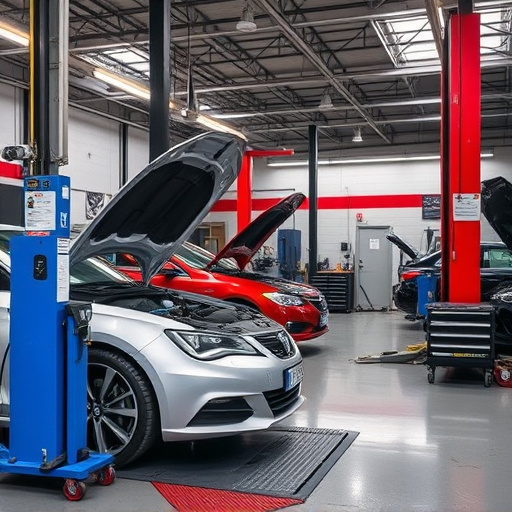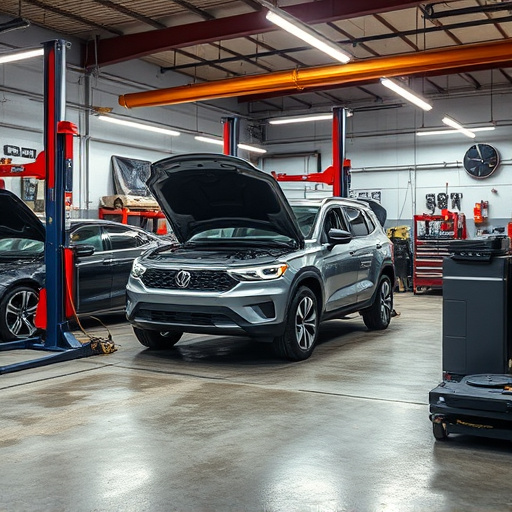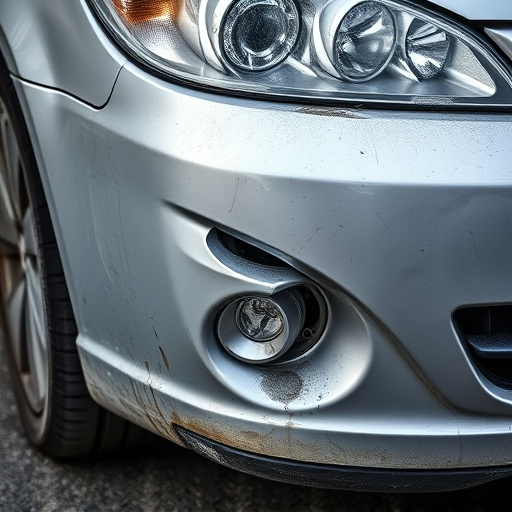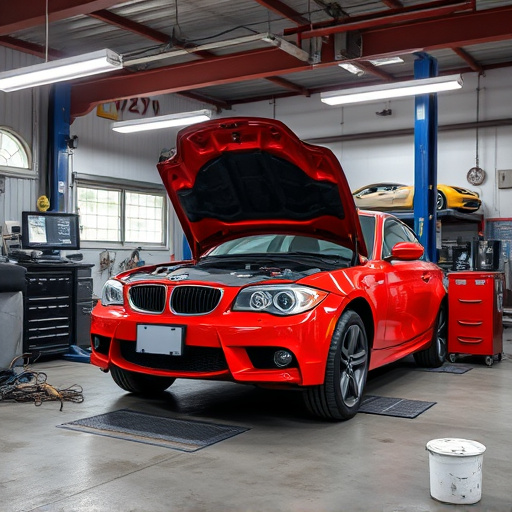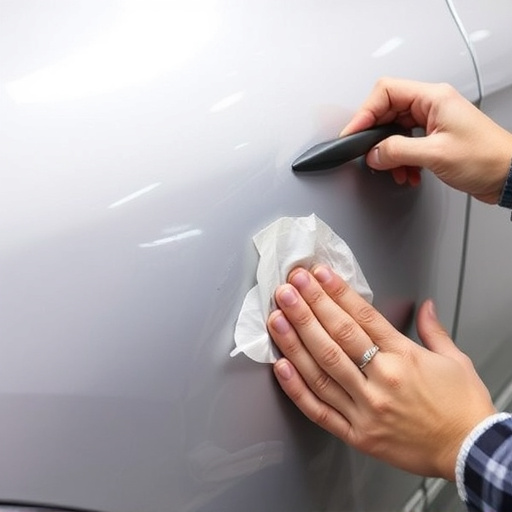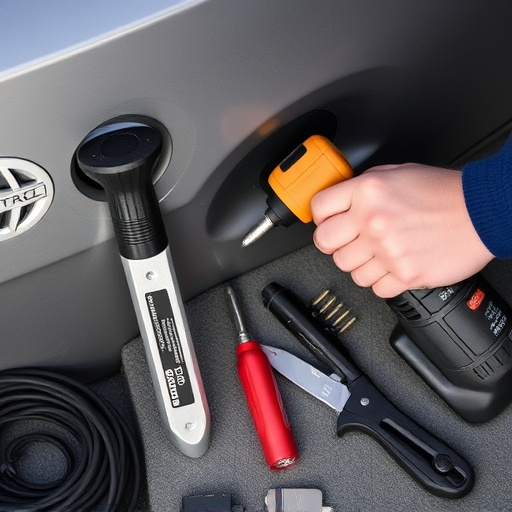Composite material replacement offers significant advantages in automotive construction, enhancing structural integrity, safety, and aesthetic appeal. Unlike traditional methods, these materials boast superior strength-to-weight ratios and cost-effectiveness. Skilled technicians employ specialized techniques, including precise dent removal and part matching, to ensure both structural soundness and original appearance during panel and frame replacements. The process involves careful assessment, material selection, tool gathering, old panel removal, cleaning, adhesive application, fitting the replacement, curing, and finishing touches.
In today’s world, composite materials are revolutionizing the way we repair damaged panels and frames. This article delves into the growing need for composite material replacement, highlighting the significant impact of damage to these components in various structures. We explore the advantages of using composite materials, including their durability, lightweight nature, and resistance to corrosion. Additionally, a step-by-step guide offers practical insights for effectively replacing damaged panels and frames, ensuring long-lasting repairs.
- Understanding Composite Material Damage and Its Impact
- Advantages of Using Composite Materials for Replacement
- Step-by-Step Guide to Effectively Replacing Damaged Panels and Frames
Understanding Composite Material Damage and Its Impact
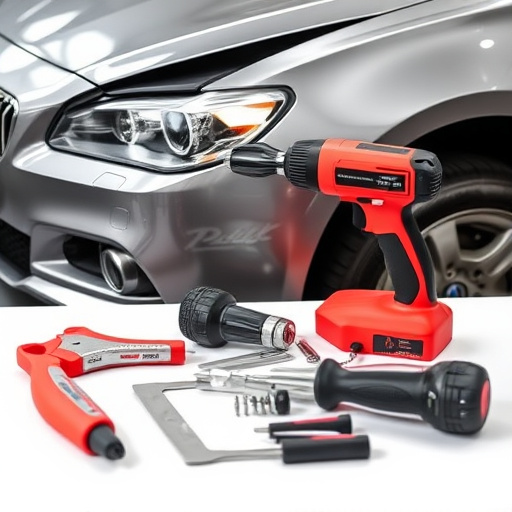
Composite materials, widely used in modern automotive construction for their lightweight strength and durability, offer distinct advantages over traditional metals. However, when damage occurs to panels or frames—whether from accidents, weather, or other incidents—the unique properties of composites present specific challenges for repair. Unlike metal, composite materials don’t simply bend or deform; they can delaminate or experience fiber breakage, leading to structural compromise.
This type of damage can affect not only the aesthetic appeal through dents, scratches, and cracks but also the overall integrity of the vehicle’s safety system. Therefore, effective composite material replacement is crucial in auto body painting and collision repair services. Skilled technicians must employ specialized techniques and tools for dent removal and precise matching of new composite parts to ensure structural soundness, maintain the original look, and prevent further damage or failure down the line.
Advantages of Using Composite Materials for Replacement

Using composite materials for panel and frame replacements offers several significant advantages over traditional methods. One of the key benefits is their exceptional strength-to-weight ratio. Composite materials are designed to withstand high structural loads, making them ideal for automotive applications where durability and safety are paramount. This feature ensures that damaged vehicles can be restored to their original specifications, enhancing overall vehicle performance and passenger security.
Moreover, composite material replacement is often more cost-effective than using conventional metals or other materials. They require less processing and have lower manufacturing costs, making them a budget-friendly option for both car repair services and ambitious car restoration projects. Additionally, composites are highly versatile, allowing for intricate designs and complex shapes, which can be particularly useful in achieving a seamless fit during paintless dent repair processes, ensuring a professional finish that maintains the vehicle’s aesthetic appeal.
Step-by-Step Guide to Effectively Replacing Damaged Panels and Frames
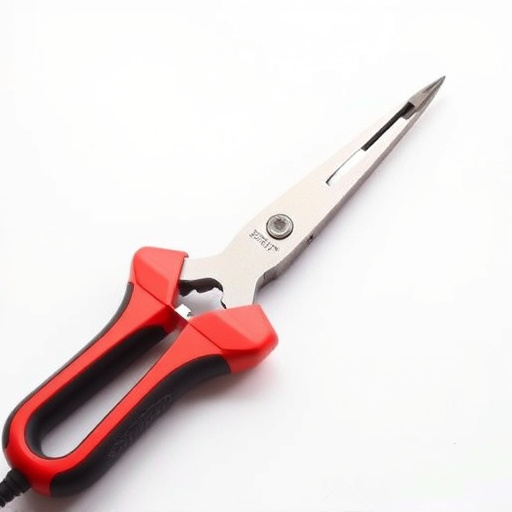
Replacing damaged panels and frames with composite material is a process that requires precision and attention to detail. Here’s a straightforward guide for car owners or those working in collision repair centers and auto body shops looking to undertake this task.
First, assess the extent of the damage. Identify which parts need replacement—panels, frames, or both. Ensure you have the right composite material for the job, considering factors like strength, durability, and color match with your vehicle’s original finish. Gather all necessary tools, including specialized adhesives, primers, paint, and protective gear. Then, carefully remove the damaged panel(s) by detaching any hardware and gently prying them away from the frame. Clean the area thoroughly to ensure a solid bond between the composite material and the existing structure. Next, apply adhesive along the edges of the replacement panel, ensuring it’s flush with the surrounding surface. Fit the panel into place and secure it temporarily. Allow the adhesive to cure according to the manufacturer’s instructions before adding any finishing touches or painting.
Composite material replacement offers a durable and cost-effective solution for damaged panels and frames. By understanding the advantages of these materials, you can effectively restore structures, ensuring longevity and aesthetics. With the step-by-step guide provided, navigating the replacement process becomes manageable. Embrace composite material replacement as a reliable method to preserve and enhance various structures, making it an ideal choice for both residential and commercial applications.
